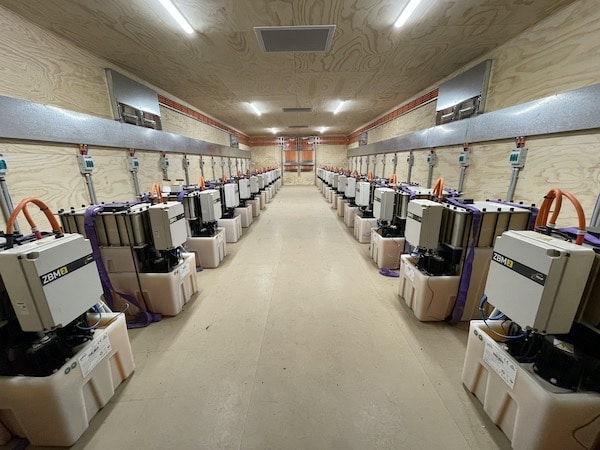Simon Hackett’s 73-hectare working sheep farm, The Vale, has now achieved energy independence through the deployment of 100 kilowatt-peak solar array and energy storage system consisting of 28 Redflow 10 kWh ZBM2 zinc-bromine flow batteries. The final deployment caps an extensive design and development processing undertaken during the past year by Tasmanian company DMS Energy.
Hackett, who leads Redflow’s software and integration efforts as its Systems Integration Architect, said the system would eliminate grid electricity costs for the property. “We expect this system to be self-sufficient, with a net negative energy bill. From now on, the Tasmanian power grid is merely a backup energy source for The Vale,” Hackett said.
“The battery array makes extensive use of the Redflow Standby Power System (SPS) mode, allowing batteries to be fully charged during good solar weather days, and to then be ‘hibernated’ with zero self-discharge. During extended overcast periods, the SPS batteries are automatically activated to support site loads instead of using the grid. This unique strength of Redflow’s ZBM2 batteries allows the site to maximise both energy storage quantity and also energy storage efficiency.”

Redflow
The property’s new energy system comprises of high-capacity, three-phase power wiring and a multi-gigabit speed single-mode optic fibre network ring, run underground to all buildings on the property. The major undergrounding project included going under a river and beneath the property’s aircraft runway, which is the longest private runway in Tasmania.
The system uses a cluster of 12 x 15KVA Victron Quattro inverter/chargers and control systems that can deliver a peak energy output of 180KVA.
The system’s energy come from the ground-mounted 100kWp solar array, which Hackett plans to expand this to 200kWp in future. The goal is to create an energy ‘fuel station’ that will serve electric tractors and other electric farm equipment that will eventually replace the existing fleet of diesel machinery.
While normally grid-interactive, the system can switch automatically and seamlessly to ‘off-grid’ mode any time the grid is not available. The solar array remains fully operative in off-grid mode, able both to power the farm and recharge the batteries.
This content is protected by copyright and may not be reused. If you want to cooperate with us and would like to reuse some of our content, please contact: editors@pv-magazine.com.









By submitting this form you agree to pv magazine using your data for the purposes of publishing your comment.
Your personal data will only be disclosed or otherwise transmitted to third parties for the purposes of spam filtering or if this is necessary for technical maintenance of the website. Any other transfer to third parties will not take place unless this is justified on the basis of applicable data protection regulations or if pv magazine is legally obliged to do so.
You may revoke this consent at any time with effect for the future, in which case your personal data will be deleted immediately. Otherwise, your data will be deleted if pv magazine has processed your request or the purpose of data storage is fulfilled.
Further information on data privacy can be found in our Data Protection Policy.